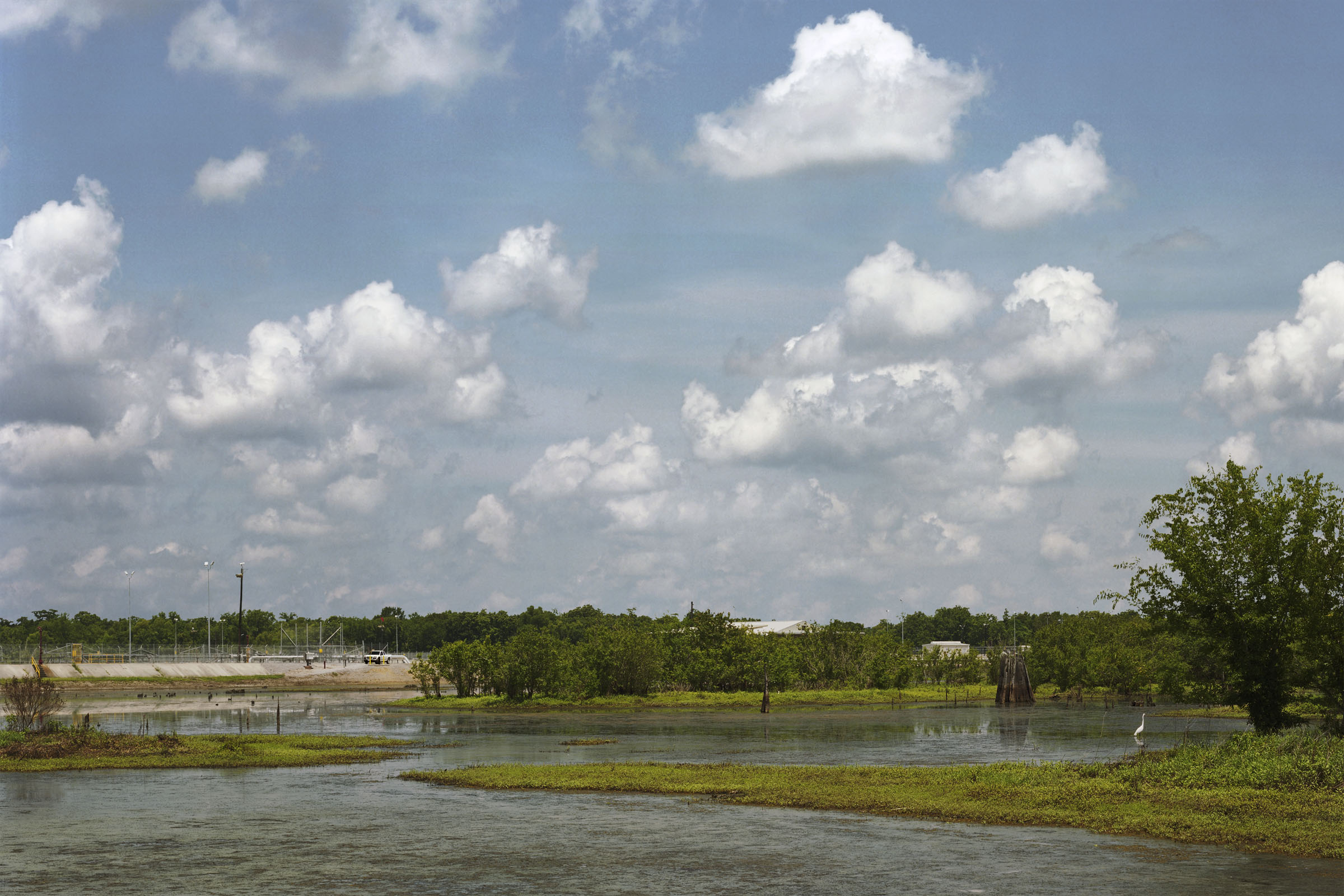Strategic Petroleum Reserve
The U.S. Strategic Petroleum Reserve (SPR) consists of 700 million barrels of crude oil in underground storage facilities along the Gulf coast of Texas and Louisiana. It was created after the 1973 Arab oil embargo to lessen the impact of future disruptions of America's foreign oil supply. The sites are built on naturally occurring salt domes. The oil is stored below ground in multiple caverns formed by injecting massive quantities of water into the salt. Each cavern is approximately 200 feet wide and 2000 feet deep, large enough to contain the Sears Tower. Oil is transported in and out of the sites by buried pipelines connected to the region's extensive petroleum industry infrastructure. The Energy Policy Act of 2005 directed that the Reserve be expanded to a capacity of one billion barrels. This will be done by enlarging three existing sites and adding an additional one in Mississippi.
There is very little to see above ground at the SPR sites- pipes, some tanks, a few buildings for maintenance, administration and security personnel and equipment. The oil below the surface is essentially invisible, as there is no human access inside the caverns. Still, the government goes to great lengths to discourage attention. These sites are designated as "critical assets" and protected by heavily armed private guards. Location maps have been removed from the Department of Energy Web site since 9/11, although aerial photos and coordinates are still available at watchdog Web sites and even on Google Earth.
To the best of my knowledge it is completely legal in the United States to photograph anything that can be seen from public land and roads (with just a few exceptions for certain military and nuclear power installations). Neither the Patriot Act nor any other post-9/11 legislation has changed this. Nevertheless, since 9/11 many photographers attempting to photograph government buildings and installations, as well as industrial and transportation sites, have been harassed, detained, and had cameras, film and memory cards confiscated by police and private security officers. The Department of Energy did agree to let me photograph from outside the sites without hindrance and allowed me to visit inside one site, but only after lengthy negotiations.
How does one photograph something that can't be seen? My approach was to work from a distance to incorporate the land and water over the storage caverns, and include lots of sky. I took inspiration from 17th century Dutch landscape paintings, whose fluffy clouds and bucolic countryside spoke of that nation's prosperity. For a while back in the twentieth century the United States enjoyed similar prosperity, with a seemingly limitless supply of petroleum to power industry and automobiles. The oil supply was truly "out of sight, out of mind".
Today it is very much on our minds. The hundreds of millions of barrels of oil beneath these idyllic landscapes offer a very thin veneer of protection to our economy and way of life. By government estimates, the Strategic Petroleum Reserve could replace foreign oil imports for 59 days. Then the tap would be empty.



